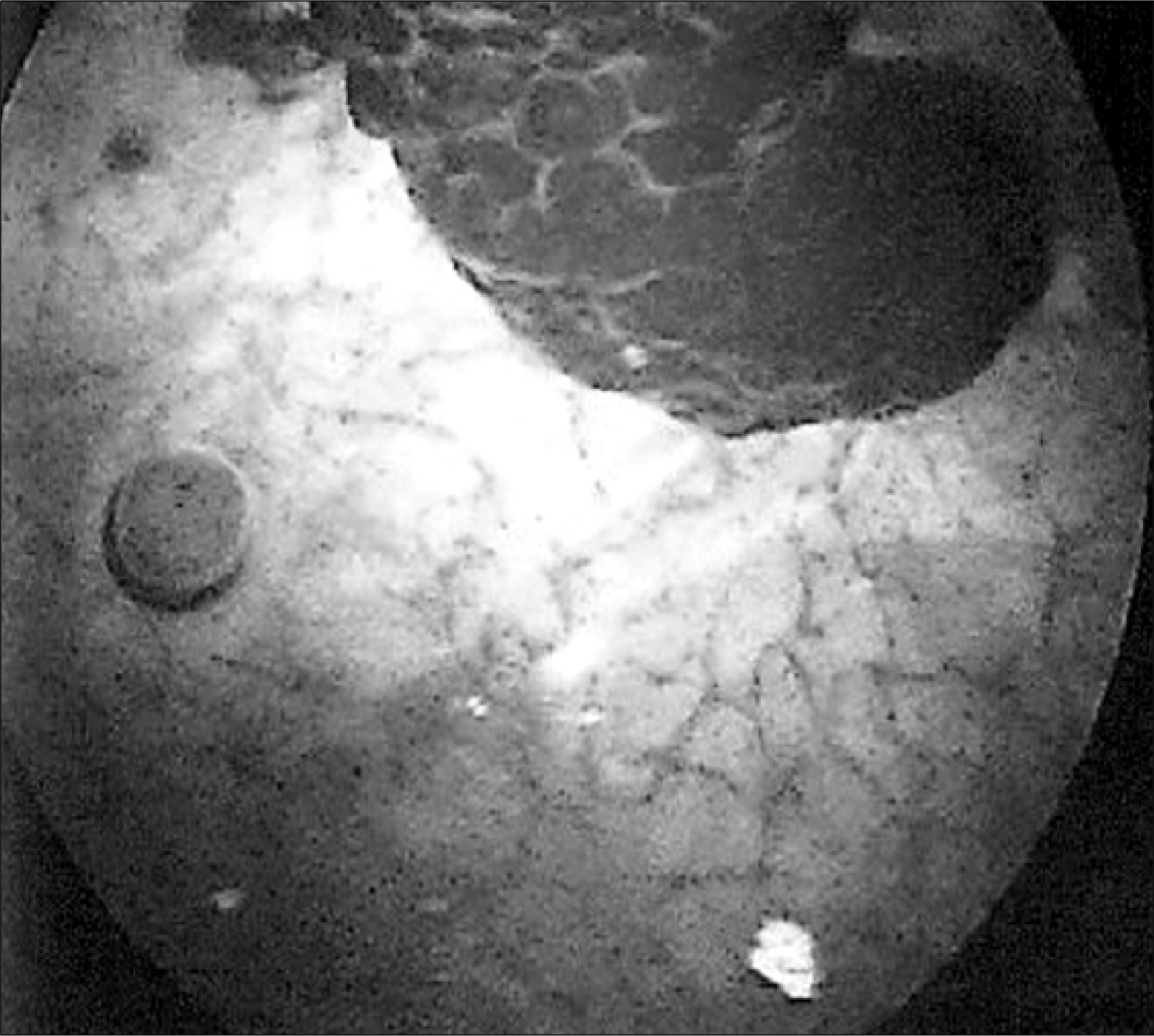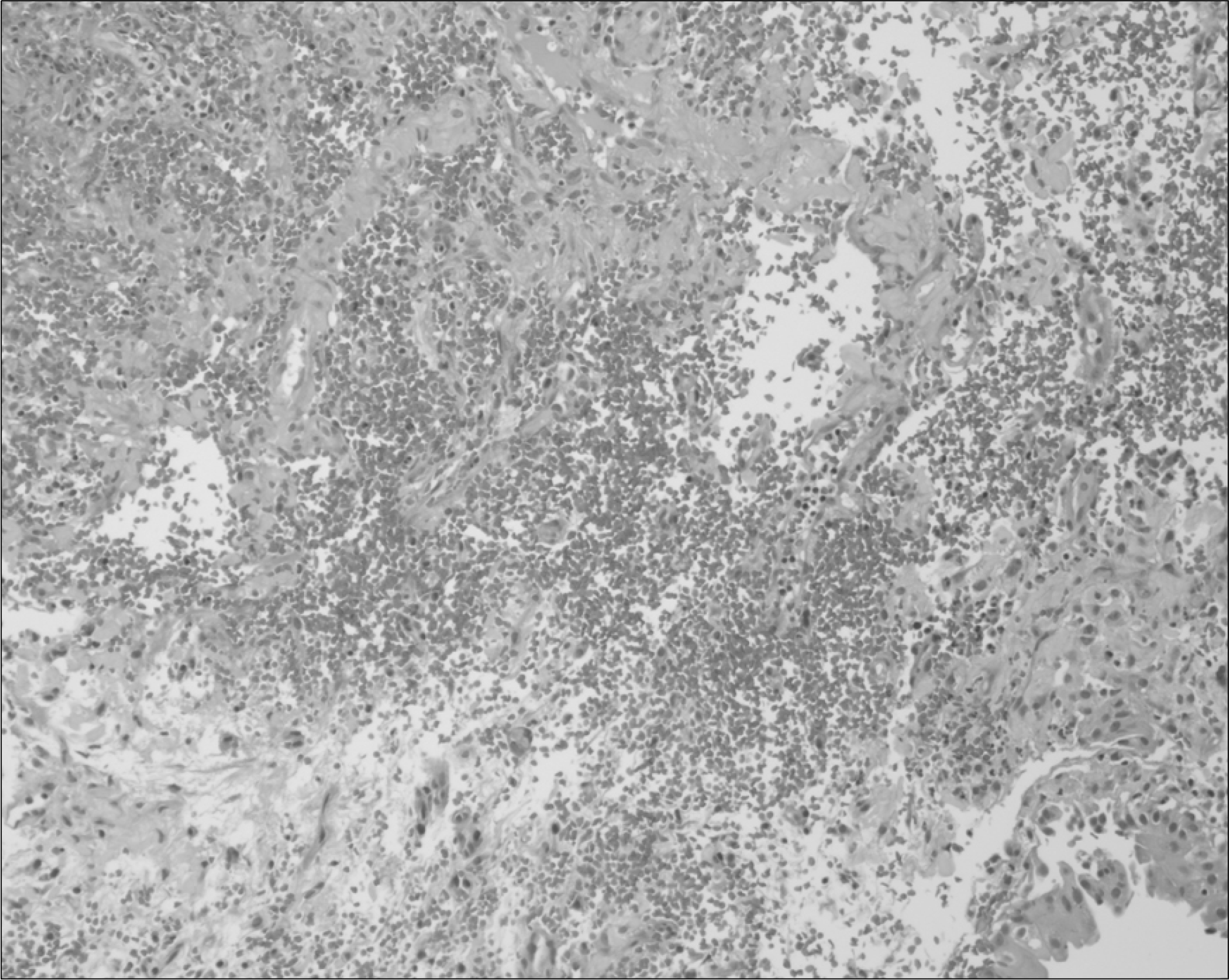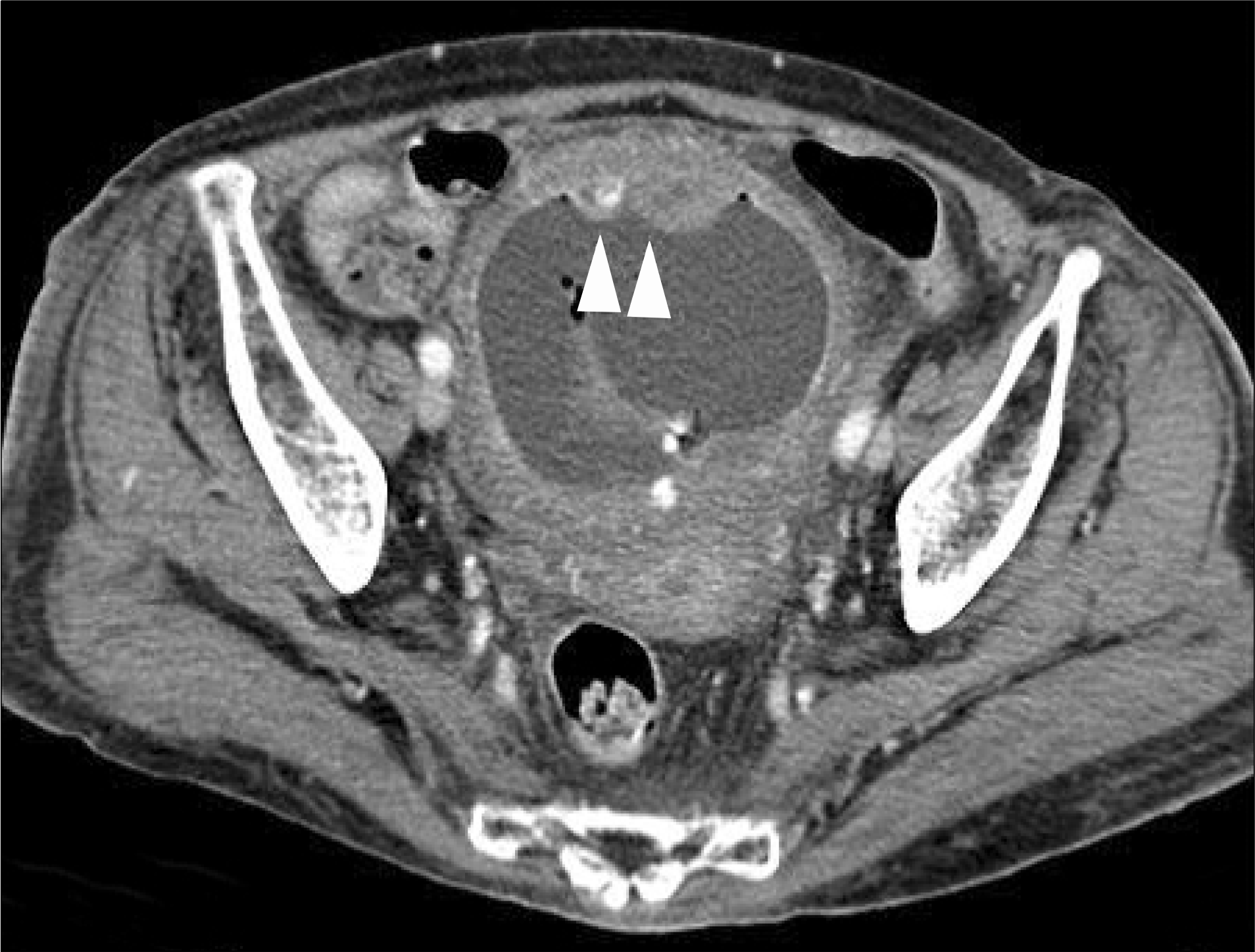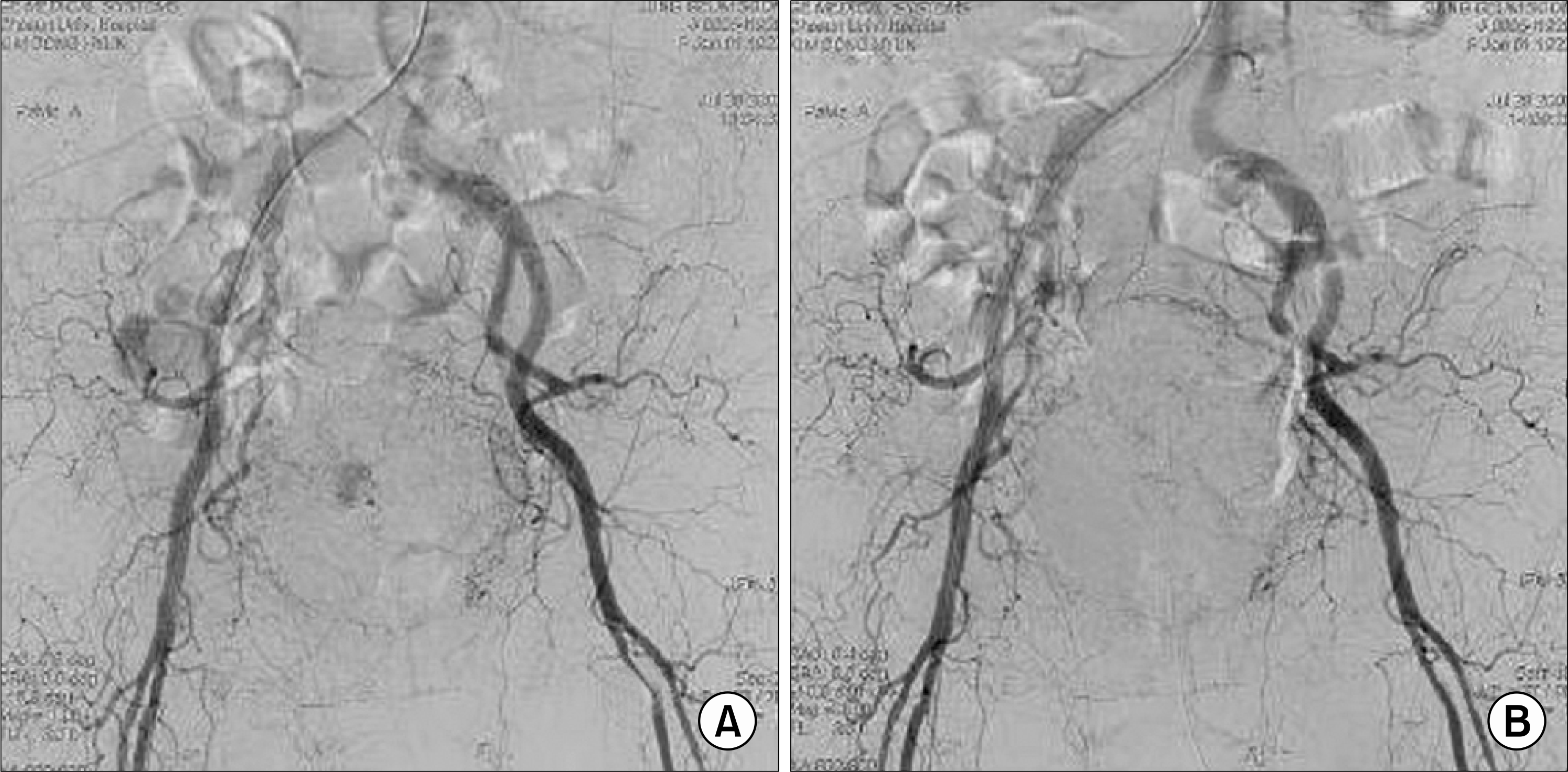Abstract
Hemangioma of the urinary bladder is a benign, congenital tumor that accounts for 0.6% of all primary bladder neoplasms. The most common symptom is gross hematuria. However, bladder hemangioma as a cause of massive hematuria is rare. The management of patients with hemangioma is controversial and numerous therapeutic approaches are available. Herein, we describe the use of selective arterial embolization to terminate an episode of massive hematuria in an 87-year-old woman with bladder hemangioma.
REFERENCES
1. Melicow MM. Tumors of the urinary bladder: a clinicopathological analysis of over 2500 specimens and biopsies. J Urol. 1955; 74:498–521.

2. Jahn H, Nissen HM. Haemangioma of the urinary tract: review of the literature. Br J Urol. 1991; 68:113–7.

3. Cheng L, Nascimento AG, Neumann RM, Nehra A, Cheville JC, Ramnani DM, et al. Hemangioma of the urinary bladder. Cancer. 1999; 86:498–504.

4. Yoon JH, Song KH, Lee SB, Jeong WJ, Kim TH, Lee KG, et al. A case of cavernous hemangioma of the urinary bladder. Korean J Uol. 2000; 41:1291–4.
5. Stimac G, Dimanovski J, Katusic J, Ruzic B, Marotti M, Kraus O. A large cavernous hemangioma of the urinary bladder: imaging of possible spontaneous regression. Eur J Radiol Ext. 2007; 61:61–3.

6. Murray WJ, Fletcher MS, Walters HL, Packham DA. Treatment of urethral hemangioma by selective arterial embolization. J Urol. 1986; 136:1304–6.

7. Fiorelli RL, Koolpe HA, Klaus RL. Use of polyvinyl alcohol in treatment of bladder and prostatic hemangioma. Urology. 1991; 38:480–2.




 PDF
PDF ePub
ePub Citation
Citation Print
Print






 XML Download
XML Download